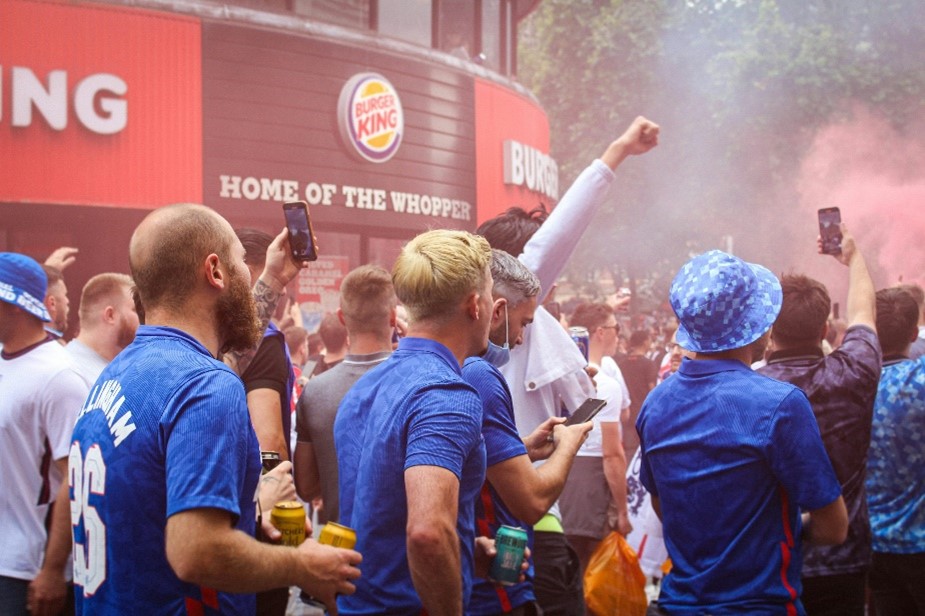July has historically gifted us with some of the hottest days of the year. So, if you’re anything like me, at the start of the month you chucked your jumpers in the attic and hopped straight on ASOS to ready your wardrobe for the scorching weather. However, in typical British fashion, we’ve been donning wellies and umbrellas instead.
It wasn’t all doom and gloom though. July was a fine month for sports, with the Tour de France, British Grand Prix, and FIFA Women’s World Cup all kicking off, awe-inspiring story of 20-year-old Carlos Alcaraz securing his inaugural title by defeating Novak Djokovic in the Wimbledon Final.
At Hatch, our month was a grand slam of success (had to slip at least one tennis pun in there!). After spotting ‘Parmesan Espresso Martinis’ were trending on TikTok, we wrote a reactive piece explaining the phenomenon and including expert comment from our client The Cocktail Co, resulting in 7 pieces of national coverage. In addition, the team managed an event for Vacheron Constantin in their Leeds City centre location, both in the upfront planning and supporting on site, and the production team had multiple successful days out, including shoots with the likes of Artesian Spas and Savour Festival.
Further afield, here are some industry highlights from July that captured our attention this month:
🦾 The Rise of ‘Fake’ Stunts:
Maybelline’s latest campaign made waves on social media with a surreal stunt that left viewers fascinated yet questioning its authenticity. The beauty giant released a video in which they had decorated a London tube and bus with giant lashes, showcasing its flexible mascara brush in action. The twist? It wasn’t real.
Give this marketing team a raise
🎥 : Maybelline UK/TikTok
✍️: @TheAshleyGreco pic.twitter.com/TVdgZD02xi
— CHUM 104.5 (@Chum1045) July 7, 2023
The stunning video, which garnered widespread attention, was the brilliant work of 3D artist Ian Padgham. The ambiguity surrounding its authenticity fuelled debate on Instagram after the original post tallied over 40 million views, as one side of the argument simply shrugged it off as a creative idea, whilst others felt a pang of disappointment upon learning the truth.
It appears that it may have opened the door to a potential surge in ‘fake’ stunts. Consider the case of Manchester City F.C., who also dazzled social media last month with illusory visuals. In a video that showcased the team arriving in Tokyo for pre-season fixtures aboard three tour coaches, the video depicted stunning player-card visuals towering overhead. Described as holograms by the club, these displays also sparked a lively debate among viewers, garnering nearly 10 million views within a few days on Twitter, with a TikTok version amassing half a million likes.
Arrived in Tokyo! 👋🇯🇵 pic.twitter.com/ZJvA3R6RhO
— Manchester City (@ManCity) July 20, 2023
From a creative perspective, ‘digitally enhanced’ placements such as these offer boundless imaginative avenues. However, the pushback from the public reinforces that transparency anchors trust, and misleading portrayals can sometimes risk eroding brand affinity. Personally, I welcome the creativity, and I’m keen to see what’s next. It also seems to be an innovative way to maximise budgets and steer clear of logistical nightmares. Nevertheless, it’s important to be aware of the broader conversation around misinformation, encompassing deepfakes, AI, and CGI.
❌ The Twitter Rebrand Saga to ‘X’
Following billionaire Elon Musk’s takeover of Twitter, his influence has ignited a whirlwind of controversy, with a flurry of unwelcome changes, including rebranding to the now-infamous X logo, creating a tumultuous transition. Amid the chaos, notable brands have taken playful jabs at X’s new identity.
#TwitterX walked so GreX could run pic.twitter.com/uIH7qoQ27H
— Greggs (@GreggsOfficial) July 24, 2023
However, the World Wide Fund for Nature (WWF) took a different approach, using the conversation to deliver a weighty message.
In a stroke of creative brilliance, the German arm of WWF harnessed the logo evolution of Twitter, mapping its journey from its inception in 2006 to the present, culminating in the striking X logo -representing a sombre end. Beyond illustrating the plight faced by global wildlife, this visual narrative stands as a poignant reminder of the severity of the challenges at hand.
Schütze unsere Tierarten, bevor es zu spät ist!
Rund 1 Million echte Tierarten sind vom Aussterben bedroht➡️ https://t.co/c8waItKH1a #TwitterX pic.twitter.com/yIoZJ7qCcw
— WWF Deutschland (@WWF_Deutschland) July 28, 2023
This arresting graphic carries a profound message, leveraging the abrupt rebrand as a symbolic representation of potential futures for our planet’s wildlife, imperilled by habitat loss and the relentless grip of global warming. The graphic’s caption, “protect our wildlife before it’s too late,”, cleverly alludes to the possible ‘X-stinction’ that looms.
Want to launch an eye-catching campaign yourself? Get in touch at hello@hatch.group to see how we can support your brand.





